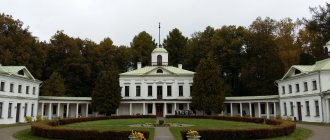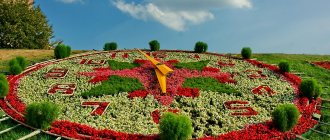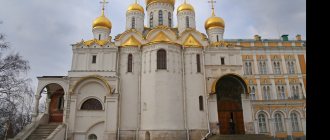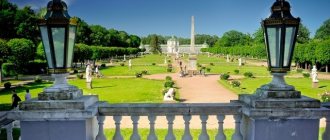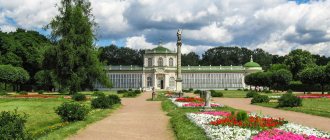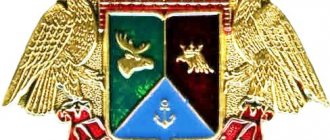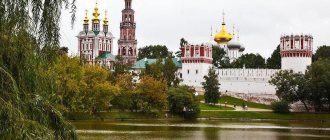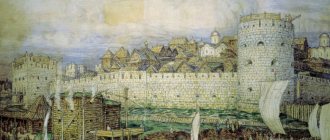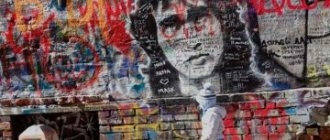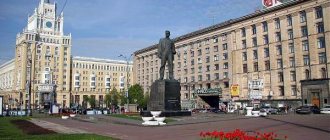Date: 18 Jul, 2021 Author: Elena Category: Weekend walks, Moscow Museums
We visited the estate in mid-May 2021 as part of the “Night at the Museum” event. The park located near the estate is free, but to get into the territory of the palace complex, you must pay.
- How to get to Kuskovo?
- Opening hours of the Kuskovo estate
- Ticket prices in 2021
- Free visit
- Museums and map of the Kuskovo estate
- History of the estate
- Weddings in Kuskovo (prices)
- Our reviews and photos
Kuskovo estate in Moscow: history of creation
Website: kuskovo.ru Address: Moscow, Yunosti Street, building 2. Opening hours: closed: Monday, Tuesday, the last Wednesday of the month is a sanitary day. The cost of entry to the park is 50 rubles, to the main palace - 250 rubles, to the Grotto - 150 rubles, there are complex and single tickets.
For several centuries, from the 18th to the 20th centuries, the Kuskovo estate in Moscow belonged to the count branch of the Sheremetevs. The construction of the architectural and park ensemble was carried out from 1740 to 1780. A palace, “entertainment establishments,” a huge park and several ponds were built. Most of the buildings were designed in the early classicist style by local serfs, Fyodor Argunov and Alexei Mironov. Several buildings were erected under the direction of civil engineer Karl Blank.
In the 18th century, the estate's holdings stretched over more than 300 hectares, including extensive hunting grounds, groves, fields and meadows. In the near part of the park there was a 300-meter canal that ended with a cascading fountain. A short distance from the main palace of the estate there was also a small menagerie, which kept hares, wolves, foxes and deer.
Free visit
There are ways to visit the Kuskovo Museum for free:
1. The “Night at the Museum” promotion is the day when many museums open their doors for free entry. Most often, free entry within the framework of the promotion becomes available in the afternoon, late in the evening. The Kuskovo museum complex began the “Night at the Museum 2019” event at 15:00 and held it until 18:00.
2. Third week of the month on Thursdays. Many have already heard about the promotion of free museum visits on the third Sunday of the month. So, now this is a whole museum week, during which museums offer free admission on certain days of the week. For Kuskovo, this is every Thursday in the third week of the month.
3. For privileged categories of the population, as well as for museum workers , admission to the park and museums of Kuskovo is free.
Love story
Kuskovo is associated with one of the most romantic love stories between the serf actress Praskovya Kovaleva (Zhemchugova) and Count Nikolai Sheremetev, the son and heir of Peter Sheremetev, the creator of a magnificent estate and one of the richest people in the country. This is a real Cinderella story, amazing for Russia.
Portrait of Praskovya Zhemchugova as Eliana
Praskovya (Parasha) Kovaleva was the daughter of a serf blacksmith from the Yaroslavl province. From the age of 7, she was raised and lived in the Kuskovo estate, where the serf actors of the Sheremetev Theater were trained by foreign teachers. As a child, she began singing in the Kuskovo serf theater, received an education, knew foreign languages, played musical instruments, and received the creative pseudonym Zhemchugova. The meeting with the young count took place in the theater when he returned from abroad and was actively involved in the reconstruction of theater buildings.
Raspberry living room of the palace
Praskovya was a talented singer, she was entrusted with the main roles in the opera, her performance made a favorable impression on Catherine II, who visited the new theater in Kuskovo. Zhemchugova was given a diamond ring by the Empress.
Portrait of Praskovya Zhemchugova. Artist N. I. Argunov
Count Nikolai Sheremetev did not immediately manage to obtain permission to marry Praskovya. By that time, she had received her freedom; she was given forged documents that she was from the family of Polish nobles Kovalevsky. The Countess died three weeks after the birth of her son Dmitry, at the age of 34. Her health had long been undermined by tuberculosis, which is why she had to leave the stage.
The count survived the death of his beloved wife by 6 years. Fulfilling the will of the deceased, he was actively involved in charity work and founded the Hospice House, which now houses the Sklifosovsky Research Institute of Emergency Medicine. Son Dmitry inherited his father's entire fortune, he was recognized as legitimate, and continued to engage in charity work.
Theaters Kuskovo
In Kuskovo, in addition to the permanent theater (New with 150 seats), there was also an “aerial stage” in a garden of linden trellises with a large amphitheater for 80–100 seats. “There was such an “air theater” in Neskuchnoye, the village of D.V. Golitsyn. The grove near the theater was once an excellent English garden, and in this grove stood the summer house of Count Pyotr Borisovich, where he constantly lived during his “non-reception” days. This house was called “the house of solitude,” writes Mikhail Pylyaev, a researcher of old Moscow. Here the count received only close friends.
Created in the 1760s, the “aerial theater” provided an opportunity to see the performance for the public who watched the performance from the paths of the park.
“The common people died with laughter at every funny word, giving their own interpretation to everything, and thus presented another very entertaining spectacle,” wrote an unknown participant in one of the Kuskovo holidays.
The serf theater was always important for the life of the estate, and under Nikolai Petrovich Sheremetev it completely eclipsed the rest of the serf theaters of the empire: its own theater orchestra, rich scenery, costumes from the best tailors. Pylyaev provides the following data: in 1811, according to an inventory made in the theater, there were seventeen chests of “theater dress” of brocade, silk, etc., and 76 chests of various headdresses, feathers, shoes, etc.
The count sent his actors to study in Moscow and St. Petersburg, and they were taught not only acting, but also languages and poetry. But what made the favorite of Paul I, chief marshal of the highest court, Nikolai Sheremetev, famous throughout Russia was not his theater or public service, but the fact that he officially married the serf actress Praskovya Kovaleva-Zhemchugova.
We must not forget that the enlightened Russian nobility perfectly combined advanced European ideas and aristocratic education with the Eastern way of life. Many landowners had harems of serf girls, who were sometimes kept in very harsh conditions. There could be no question of refusing the master or his guests. Therefore, Sheremetev’s many years of requests, first to Paul I, then to Alexander I, to allow an official marriage with his beloved actress (whom, however, he had long given his freedom) met with absolute misunderstanding and refusal. And only in 1801, the fifty-year-old Count Sheremetev received a gift from the young Emperor Alexander I - a special edict that gave him the right to marry the Polish noblewoman Paraskeva Kovalevskaya (the documents about the nobility, of course, were fake).
In 1803, a son, Count Dmitry, was born into the Sheremetev family, and twenty days after the birth of her son, Praskovya Sheremeteva-Zhemchugova died. The count's life lost its meaning. In 1804, he finally dissolved his serf theater and became involved in charity work. In memory of his beloved, he built a Hospice House in Moscow (now the building of the N.V. Sklifosovsky Research Institute of Emergency Medicine).
Current state of the estate
After the revolutionary events of 1917, the last owner of the Kuskovo estate, Count Sergei Dmitrievich Sheremetev (grandson of Praskovya Zhemchugova and Nikolai Petrovich Sheremetev), transferred all his property to the complete disposal of the Bolsheviks - estates in Kuskovo, Ostankino, Ostafyevo, Voronovo, the Hospice House and the Fountain Palace in St. -Petersburg. Before his death in December 1918, Sergei Dmitrievich, together with the artists S.Yu. Zhukovsky and V.N. Meshkov was involved in compiling an inventory of museum values of the Kuskovo estate.
The estate was nationalized and received the status of the Kuskovo State Estate Museum. On May 1, 1919, the museum opened its doors to visitors, and it was this decision of the Soviet government that allowed the unique estate complex, along with all the architectural and landscape monuments, to remain safe and sound. Numerous art, library and archival funds of the estate were also untouched.
In 1932, the porcelain museum was moved to the museum, created on the basis of the collection of Russian porcelain of Alexander Morozov, nationalized in 1918. In 1938, the two museum complexes were combined into one, which over the course of several decades was intensively replenished with new exhibits. Today it includes about 50 thousand artifacts, regularly organizes its own exhibitions, and also participates in international and interregional exhibition projects.
In addition, the Kuskovo estate in Moscow regularly hosts theatrical and entertainment programs, receptions, folk festivals, festivals and classical music concerts with the participation of Russian and foreign performers. Here you can order a solemn marriage registration, ride a boat or horse-drawn carriage, attend museum master classes and excursions.
Sights of the Kuskovo estate
The main architectural appearance of the estate took shape around the second half of the 18th century, after which the estate remained virtually unchanged, but some parts of the complex did not survive. For example, the Chinese and Pillar Pavilions, the House of Solitude, where the count’s family lived, the Portrait Gallery, the Theater and other buildings have been irretrievably lost.
Today, on the territory of the Kuskovo estate there are the following buildings: the Main Palace, the Church of the All-Merciful Savior with a bell tower and the Kitchen Wing forming the ensemble of the Court of Honor on the shore of the Big Pond. In addition to them, the Large Stone Greenhouse, the Grotto and Hermitage pavilions, Italian, Swiss and Dutch houses.
Our reviews and photos
We were lucky enough to get to the museum as part of the “Night at the Museum” event, although this was not our first visit to Kuskovo.
It’s a pity that a lot of things were under restoration (Grotto, Italian House, American Greenhouse) - but at the same time we managed to visit a large stone greenhouse, and even go through a quest there. We visited the Hermitage and, of course, the Grand Palace.
Thanks to the architects and staff of the museum - everything is carefully preserved and restored, you can feel the care of the museum by people dedicated to their work.
The only disadvantage of visiting the estate for free, as elsewhere, is the very large number of people. Everywhere, except the Grand Palace, there is a queue, which is due to the limited space, which is not designed for such a number of people. However, it is possible to get inside. We managed to visit everything that was open.
A small fly in the ointment that we didn’t like:
1. I didn’t like the organization of horseback riding in a carriage. They drove the poor horse sparingly. Those. She did not walk like a highlander, but almost at a gallop, pulling this cart with the people riding behind her. There is no way to call it anything other than animal cruelty.
The same carriage with a horse
2. If you want to have a snack, there is only one small buffet on the estate. On the day of the free visit, there was a huge queue to get in. Perhaps on other days there is not such a rush here. You can find cafes and mobile trays with food and drinks in the free territory of the forest park or closer to the metro.
If we recommend or not recommend visiting the Kuskovo estate, we, of course, recommend it! Moreover, it is better to spend the whole day for a walk - in addition to visiting the estate and the small garden - there is the Kuskovo forest park, which is quite large, there is a place to walk, breathe fresh air and admire the museum and park complex on the opposite side of the pond.
Castle
The wooden palace, painted soft pink (the color of dawn) is the compositional center of the Kuskovo estate, which was used for ceremonial events. It was built in the style of early classicism in 1769 - 1775 under the leadership of the famous Moscow architect Karl Blank. In the 18th century it was called the Big House. The southern main facade is decorated with three porticoes with columns.
The main entrance faces the Great Pond and is decorated with a central portico with six columns and a grand staircase with two white stone ramps - gentle slopes for the entry of carriages on which sit plaster figures of sphinxes. Despite the fact that the palace is made in the traditions of stone architecture, it is built of logs and covered with planks. The palace is one-story, with mezzanines and on a high base, in the basements of which wine cellars were located.
Dance hall
The interiors of the palace are arranged in an enfilade, with the doors of all rooms located on the same axis. The large house was not intended for housing, but for festive dinners, musical concerts, balls and entertaining the most senior guests. The purpose of the palace is to evoke surprise and admiration for the splendor and luxury of its decoration.
Dining room
History of the estate
The first documentary mentions of Kuskov date back to the beginning of the 16th century, when V.A. Sheremetev exchanged land from A.A. Pushkin. Since then, the Sheremetev family owned the estate for almost 300 years, and if it was sold, it was only within the family. Thus, an associate of Peter I, commander and diplomat, Field Marshal Boris Petrovich Sheremetev bought Kuskovo from his brother in 1715.
Under his son, Count Pyotr Borisovich, who inherited the estate in 1719, Kuskovo gained European fame. This was largely due to his advantageous marriage.
The fact is that the Sheremetevs owned only a small plot, and all other lands in the district belonged to State Chancellor Alexei Mikhailovich Cherkassky. After the marriage in 1743 of Count Pyotr Borisovich with the prince’s only daughter Varvara, who was a maid of honor at the highest court and was considered the richest bride in Russia, the Sheremetevs became the sole owners of these lands. By the way, at first Varvara Alekseevna was betrothed to the famous satirist Prince Antioch Cantemir, who refused the marriage, believing that marriage would interfere with his literary and scientific pursuits. Peter Sheremetev, having retired from court service, was glad to start improving the estate. He personally supervised construction work in all areas: the layout of the park, the construction and decoration of the palace and pavilions. The Kuskovsky ensemble as a whole was formed in the years 1750–1770.
The wooden palace, built under the leadership of the famous Moscow architect Karl Blank in the style of early Russian classicism, was intended for the ceremonial reception of guests in the summer. The palace was two-story and consisted of a main floor and a mezzanine, on a high stone plinth. A white stone staircase and gentle ramps lead to the main entrance of the palace - descents for carriages to enter.
Church of the All-Merciful Savior
A unique architectural monument in the “Anninsky Baroque” style was built from 1737 to 1739 and is the earliest building of the estate. The building is a ceremonial white-stone temple, decorated with sculptures of the apostles and crowned with a small cross, which is held up by the figure of an angel with outstretched wings. The main decoration of the current decoration of the church is a two-tier chandelier with eighteen candles, on which figures of seraphim are depicted.
Half a century later, a wooden bell tower was added to the temple, becoming the last significant building in Kuskovo.
Kitchen outbuilding
The outbuilding appeared between the Main Palace and the church in 1755; serf architect F. Argunov worked on its design. The building simultaneously housed Russian and French kitchens, a confectionery, coffee, tablecloth and bread rooms. A separate building for cooking spared the owners of the estate from the fuss of cooking and the aromas of dishes, and the servants took out the food through a side exit on the ground floor and carried it from there directly to the “Big House”.
Grotto
In 1756-1761, one of the most bizarre architectural buildings - the Grotto - appeared in Kuskovo. The pavilion in the Rococo style was erected under the leadership of the gifted Fyodor Argunov, who wanted the building to personify two elements at the same time: stone and water.
The structure is a house made of stone, decorated with sculptures and lion masks, and the interior walls are decorated with shells, volcanic rocks and colored glass. The central room is painted with pink and green colors, the northern office is painted in cold colors, and the southern one in warm colors.
Now the Grotto is the only pavilion in Russia that has preserved the unique “grotto” decoration of the 18th century.
Grotto: 24 types of tropical sea shells
The Grotto Pavilion stands apart in the Kuskovo architectural complex.
Today it is the only pavilion in the whole country that has preserved its decoration from the 18th century.
A full-scale restoration of the building was recently completed, as a result of which the interiors with a unique “shell” decor were also restored.
When I took these photos, restoration was still underway.
And now, as far as I understand, you can go there and see unique clay sculptures and narrative panels, inlaid with the “armor of sea inhabitants” - corals, shells, mother-of-pearl.
In total, 24 types of tropical sea shells were used in interior decoration!
In these exotic “grottoic” interiors, the owners of the estate gave ceremonial dinners for the emperors. P.B. Sheremetyev received Catherine II here in 1775, and his great-grandson treated Alexander III 100 years later.
There was fruit, champagne and a gypsy choir singing.
Let's move on.
Italian house
The Italian house was built in 1754-1755 with the participation of architect Yu.I. Kologrivov, who received an Italian education, and the serf Argunov.
The house was needed for small receptions, as well as for storing works of art and rarities, which made it look like a small museum. Part of the collection remains in the pavilion today.
Swiss house
The wooden two-story building, which appeared on the lands of Kuskovo in the 70s of the 19th century, is significantly different from other buildings on the estate. The walls of the lower floor are painted to resemble brick, and the upper floor is decorated with wooden carvings. The roof of the house is decorated with openwork carvings and is supported by balcony columns. Architect - N. L. Benois.
At the beginning of the 20th century, the last owner of the estate, Sergei Sheremetev, lived here. And today the Directorate of the Kuskovo Estate Museum is located here.
Ticket prices in 2021
To just stroll through the estate park, you have to pay 50 rubles for entry.
To visit the palace, museums, greenhouse, Hermitage, etc. You need to buy additional tickets at the box office at the entrance of the estate.
See all ticket prices below.
You can also visit a palace or park as part of a tour group.
The cost of a group excursion is from 750 rubles. up to 6500 rub.
The price depends on the number of people in the excursion group and the program.
The cost of an individual excursion is 4000 rubles. (designed for 1-10 people).
Excursion to Kuskovo
Below are the prices for tickets to the Kuskovo Museum-Estate, the museum and park ensemble and various events:
Dutch house
A small garden house appeared in Kuskovo in 1749. This is a small building in an ascetic style, more like a 17th century Dutch hut.
Next to the house there is a garden and a vegetable garden, creating the illusion of a street located on the river bank. Visitors to the estate can only look at the building from the outside; entry inside is prohibited.
Hermitage Pavilion
The Hermitage garden pavilion was needed by Count Sheremetev in order to receive his closest friends, with whom he needed to be alone during social receptions or balls. Visitors to the estate could ascend to the upper floor using a special lifting mechanism, while on the lower floor servants served snacks and drinks on an elegant lifting table.
The Kuskovo “Hermitage” is one of the three surviving similar park buildings of this type (Peterhof, Tsarskoye Selo). It was erected in 1765-1767 according to the design of Karl Blank, a popular Moscow architect in those years.
Air theater
More recently, a unique example of the unity of architectural, park and theatrical art was the estate's Air Theater, which was formed in the 1760s from a stage area and an amphitheater. Moreover, the theater stage was located on a hill, the height of which was about 1.5 meters and was surrounded by bosquets and trimmed barberries. The upper part of the stage was covered with a grass carpet, and during productions it was covered with wooden flooring. The backstage was a spruce structure, which has not survived to this day.
The theater gave performances not only for honored guests, who sat comfortably on the three benches of the amphitheater. Commoners who watched the actors from the park paths could also watch the performances.
Large stone greenhouse
In the Kuskovo park ensemble, the most significant pavilion in size is the Large Stone Orangery, built in 1763 by the architect Fyodor Argunov.
At that time, it was used not only for its intended purpose: receptions of guests, music and dance evenings were also held here. The protruding sides of the building housed playrooms and a gardener's room. Now the greenhouse houses exhibitions of the State Museum of Ceramics.
American greenhouse
Kuskovo Estate American Greenhouse (2019)
Estate "Kuskovo" Manager's House (2019)
In the middle of the 18th century, Count P.B. Sheremetev built the American greenhouse for exotic heat-loving plants. To enhance the thermal effect, greenish glass was used in the gallery. Currently, it is a modern reconstruction of a partially preserved greenhouse.
Behind the American Greenhouse is the "Manager's House", built in the second half of the 19th century.
A few facts about the Kuskovo estate
- In 1770–1780, up to 30 thousand people came to the estate at one time.
- In 1774, Empress Catherine II visited Kuskovo, and a magnificent ball was held in her honor.
- In 1942-1943, the central women's sniper school was located in the palace building, which graduated more than 2,000 female snipers.
- The Kuskovo estate in Moscow has its own Porcelain Museum, the collection of which includes several thousand ceramic and glass exhibits belonging to different time periods.
- The main fund of the museum includes approximately 6 thousand books and works of art collected by the Sheremetevs and expanded in the future.
- In Kuskovo and the adjacent forest park area, the filming of Russian films and TV series has repeatedly taken place, including “Shirley-Myrli”, “An Ordinary Miracle”, “Hello, I am your Aunt!”, “Institute of Noble Maidens”, “Secrets of the Institute of Noble Maidens”, “Midshipmen, forward”, “Viva, midshipmen!” etc.
- The video “Black Sun” of the famous Russian group Bi-2 was filmed on the Kuskovo lands.
Estate structure
The earliest building of the estate is the Church of the All-Merciful Savior, built in 1737 in the “Anninsky Baroque” style, and the bell tower, on the contrary, is the latest of the estate buildings. Together with the palace and the kitchen wing, these buildings form the ensemble of the Court of Honor, located on the shore of the Big Pond.
Soon the fame of the brilliant “summer country pleasure residence” of the Sheremetev family spread throughout Russia and even Europe. Kuskov's main purpose at that time was to entertain and surprise numerous guests. In the 1770–1780s, Kuskovo was visited by up to 30 thousand people per reception, including crowned persons: Empress Catherine II visited here in 1774, Holy Roman Emperor Joseph II and many others also visited Kuskovo.
The holiday program included folklore performances, boat rides accompanied by choir singing, fireworks, orchestras, naval parades, games and carousels and, of course, balls and theatrical performances.
The entire structure of the estate was subordinated to the idea of amusement and celebration, where there was a game alley, a carousel, a “funny flotilla,” estate “museums” and a library. There was “Diogenes” here, dug into the ground - he was sitting in an oak vat with a removable lid; The philosopher was made of alabaster and painted to match the color of the natural body, he had with him an ant jug and a corded book bound in leather.
In the only French regular park in Moscow with marble sculptures and a complex system of ponds, canals and bridges, numerous pavilions were scattered, many of which have survived to this day. “The ponds of Kuskov were full of expensive fish; there was so much fish that 2,000 crucian carp were caught in a seine at a time, and once a shell with pearls was taken out of the pond; in the old days there were several fishermen’s huts on the pond, there were yachts with boats and boats, there was an island with ruins, there were sailors in skippers’ caftans of coffee and cherry color with white buttons,” wrote Mikhail Pylyaev, a researcher of old Moscow.
In the western and eastern parts of the estate, the Dutch and Italian pavilions were built, which have survived to this day in the best possible condition. The earliest of the entertainment pavilions of the Kuskovo estate - the Dutch House, built in 1749 in memory of the era of Peter I - was the first to greet guests entering the estate through the drawbridge. This house was entirely lined inside with tiles or tiles of the most varied designs, with a marble floor, and the walls were decorated with many paintings with Dutch views of the Flemish school depicting domestic life. The Italian house served as a palace for “small receptions” and at the same time as a storage place for rare works of art. In the eastern part of the Kuskovo park, on the shore of a small picturesque pond, there is the Grotto pavilion.
This baroque building with a stone vase on the dome and columns was built in 1756–1761 by the Sheremetev serf architect Fyodor Argunov. Currently, the Kuskovo Grotto is the only pavilion in Russia that has preserved its unique decoration from the 18th century, and, without a doubt, it is the most exotic among the architectural structures of the estate.
In the southwestern part of the park there is the Hermitage pavilion (from the French ermitage - hermit's hut), which was used to receive guests who could retire on the second floor without servants (it could only be reached using an elevator). The pavilion was built in 1765–1767 under the “supervision” of Karl Blanc. Only the typesetting parquet in the round offices, as well as fragments of the ceiling painting on the second floor, have survived to this day. But the museum carried out enormous restoration work (the architecture and sculpture of the facades were restored, the parquet floors and stairs were restored), and the Hermitage opened to visitors in 2013.
In addition, two greenhouses were built in Kuskovo, without which almost no estate could do at that time. The American Orangery was built in the 1750s in the northeastern part of the regular park. In 1763, according to the design of the serf architect Fyodor Argunov, the Large Stone Orangery was created, which became the largest pavilion of the palace and park ensemble of the estate. In addition to growing fruits and flowers, it was also used for receiving guests. Inside the pavilion there was a “voxal”, a small round dance hall with choirs for musicians.
